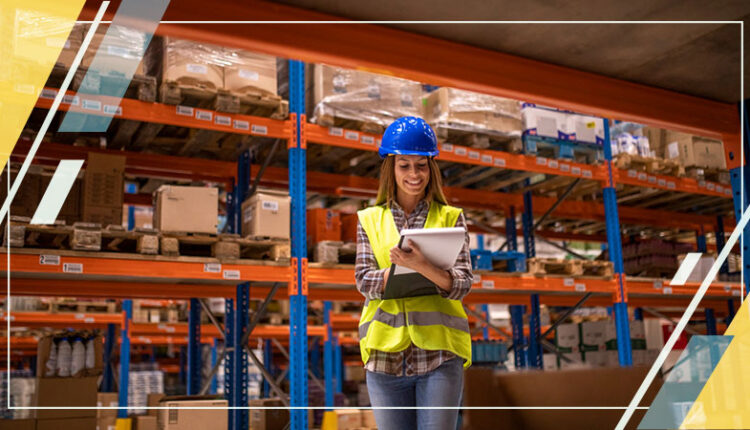In the fast-paced realm of retail, where time is money and customer demands are relentless, one element emerges as the unsung hero: retail logistics. It’s the intricate web of operations that ensures a seamless journey for products from the manufacturer to store shelves. It is the invisible force that keeps the retail engine running.
So, get ready to step into the captivating world of smooth retail operations, where efficiency meets strategy.
What is Retail Logistics?
It encompasses various processes that involve the movement of finalized products from the company to the ultimate consumers. A sustainable and effective retail logistics strategy is essential for the successful operation of a direct-to-consumer (DTC) retail business.
The retail industry’s logistics process includes critical stages like receiving goods, inventory management, order fulfillment, and shipping. Optimizing each phase is vital to meeting customer expectations for fast and efficient delivery.
Understanding the combination of workforce and supply chain technology facilitates effective retail operations. However, embracing both of these elements can result in higher expenses for logistics. To mitigate these costs, many DTC brands outsource their logistics to third-party providers, allowing them to save time and reduce overall expenses.
What are the Key Benefits of Retail Logistics?
Retail logistics act as a backbone of the success of the retail industry. Here are some of its key advantages:
● Streamlined Supply Chain Management
Effectively managing the movement of goods, optimizing shipping methods, and ensuring timely delivery to customers helps streamline the supply chain and ensure smooth operation.
● Reduced Delivery Times
Retail logistics can improve delivery times by strategically placing distribution centers near cities and industrial areas, resulting in faster order processing and improved customer satisfaction.
● Cost Optimization
Centralizing product reception and shipment tasks can reduce unnecessary storage and transport expenses.
● Improved Inventory Management
Accurate tracking systems enable retailers to have real-time visibility of their inventory, which reduces the risk of stockouts and overstocking, leading to cost savings and improved customer satisfaction.
● Flexibility and Responsiveness
Effective logistics systems enable retailers to adapt quickly to changing consumer preferences, market trends, and demand fluctuations. This agility helps retailers stay competitive and meet customer expectations.
● Enhanced Customer Experience
Timely and accurate order fulfillment, fast delivery, and efficient return management contribute to customer satisfaction and loyalty.
● Competitive Advantage
By optimizing supply chain operations, reducing costs, and improving customer service, retailers can differentiate themselves from competitors and attract more customers.
Top 5 Trends in Retail Logistics Reshaping the Retail Industry
Here are the top trends that are facilitating the growth of the retail sector:
1. Drones-based Delivery
Various sectors are embracing the Internet of Things (IoT) to enhance operational effectiveness, and one industry that is currently being transformed is retail logistics. A notable instance is the introduction of Amazon’s Prime Air, an innovative delivery service utilizing drones for expedited and streamlined last-mile delivery. This cutting-edge technology has the capability to completely revolutionize the swiftness and convenience of package transportation.
2. Autonomous vehicles
Self-driving cars, an advanced technological innovation, have revolutionized the way we travel. Typically associated with convenience and comfort while driving, Walmart has introduced a groundbreaking concept of utilizing these autonomous vehicles in the realm of retail logistics. The company has been exploring the use of self-driving trucks to transport goods between its distribution centers, enhancing efficiency and reducing costs.
3. AGV Robots
An AVG (automated guided vehicle) is a portable robot that uses long lines or wires, radio waves, vision cameras, magnets, or lasers for navigation. It is a load-carrier vehicle that is often used in manufacturing.
Recently, JD.com, a leading Chinese e-commerce company, has implemented an innovative concept called “Unmanned Warehouse” using AGVs to move and organize products in warehouses. This technology improves operational efficiency by reducing human error and increasing speed.
4. Advanced Order Management System
In order to facilitate seamless operations in retail logistics, it is essential to employ an efficient order management system. Such a system enables the tracking of inventory and orders, resulting in improved delivery. To cite an instance, Shopify, an e-commerce platform, has developed an advanced order management system that integrates seamlessly with various sales channels and provides real-time inventory visibility. This allows retailers to efficiently manage orders from multiple sources and provide a unified shopping experience for customers.
5. Smart Devices
Navigating the retail logistics environment can be quite demanding, requiring a meticulous approach to inventory management and order tracking to facilitate business growth.
To mitigate this problem, Zebra Technologies offers innovative solutions like handheld devices and barcode scanners that enable retailers to track inventory accurately, enhance order fulfillment, and improve overall supply chain visibility. These tools help streamline operations, reducing errors and improving efficiency.
Delivering Success
Retail logistics stands as the backbone that powers the retail industry. From sourcing and procurement to warehousing and distribution, it ensures that products flow smoothly through the supply chain, reaching the hands of eager customers in time. With its focus on efficiency, cost-effectiveness, and customer satisfaction, it is undeniable that retail logistics is playing a significant role in shaping the future of this industry.


